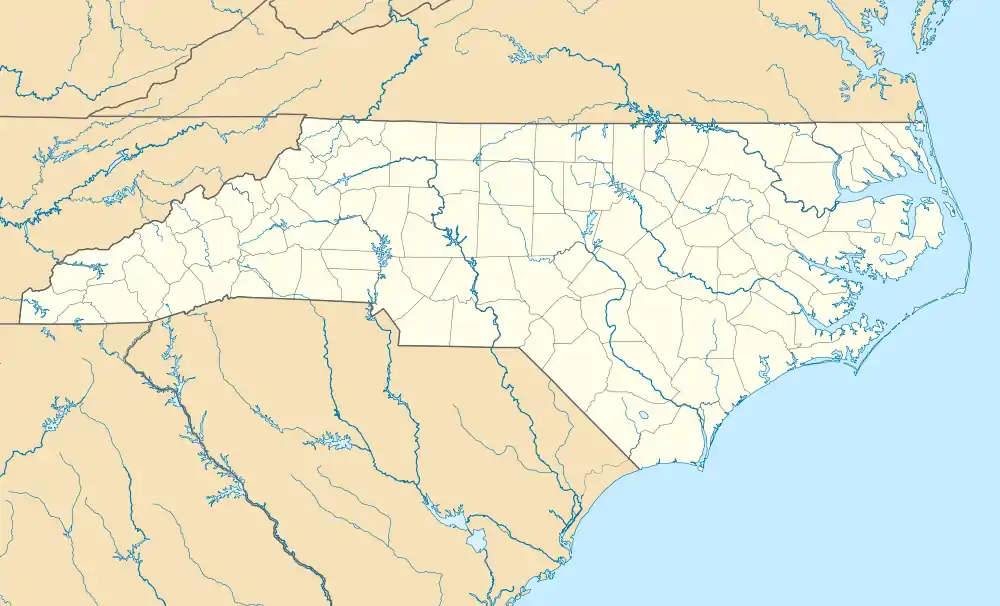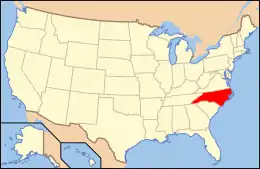West Asheville End of Car Line Historic District
West Asheville End of Car Line Historic District is a national historic district located at Asheville, Buncombe County, North Carolina. The district encompasses 24 contributing buildings in a primarily commercial section of West Asheville. It includes a nearly continuous row of one and two-story brick and concrete block commercial buildings that date from 1916 through the mid-1930s. Their development was influenced by streetcar service along the Haywood Road corridor that operated from 1910 to 1934. Notable buildings include the separately listed Bledsoe Building, along with the Isis Theater (1937), Franklin Building (1923), Pure Oil Station (1947), Wells Building (1917), Palace Theater (1928), Great A&P Tea Company (1926), and West Asheville Post Office (1929).[2]
West Asheville End of Car Line Historic District | |
 Contributing Structures on Haywood Road, January 2019 | |
  | |
| Location | Both sides of Haywood Rd. from 715 to 814 and 7-9 Brevard Rd., Asheville, North Carolina |
|---|---|
| Coordinates | 35°34′41″N 82°35′39″W |
| Area | 12 acres (4.9 ha) |
| Built | 1916 |
| Architectural style | Early Commercial, Bungalow/craftsman |
| NRHP reference No. | 06000691[1] |
| Added to NRHP | August 9, 2006 |
It was listed on the National Register of Historic Places in 2006.[1]
References
- "National Register Information System". National Register of Historic Places. National Park Service. July 9, 2010.
- Clay Griffith (April 2006). "West Asheville End of Car Line Historic District" (pdf). National Register of Historic Places - Nomination and Inventory. North Carolina State Historic Preservation Office. Retrieved 2014-08-01.

